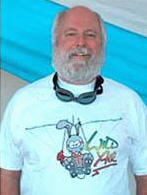 The hang glider
relied on its wing sweep for yaw stability and weight shift for
pitch control. Unlike flex wing hang gliders, it used tip rudders
for roll control, operated by control bar-mounted sliders.
The hang glider
relied on its wing sweep for yaw stability and weight shift for
pitch control. Unlike flex wing hang gliders, it used tip rudders
for roll control, operated by control bar-mounted sliders.
Pterodactyl designer Jack McCornack selected
the Manta Fledge IIB wing for his powered hang glider project in
1977. He figured that the wing had lots of growth potential, along
with a good speed range and pleasant handling characteristics.
McCornack designed a completely new hang cage, engine mounting and
undercarriage for the aircraft. Control for the flying wing design
was the same as the hang glider – weight shift for pitch control
and twist grip tip rudder control for roll. Engine controls
consisted of a mouth throttle, as both hands were used for the
individual twist grips. McCornack called the aircraft the
Pterodactyl Pfledge (also known as a Fledgling and even as a
Fledge) and it first flew in 1977. A direct drive Xenoah two
stroke engine putting out about 16 hp and swinging a 36-inch prop
supplied the power.
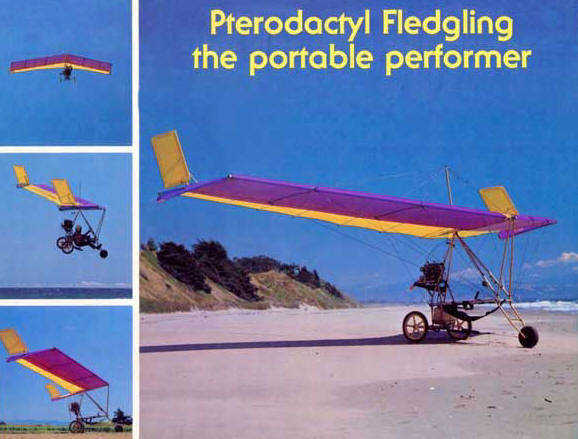
The original Pfledge was first shown at the
Gilroy, California fly-in in 1978. Two Pfledges were actually
flown into the desert ultralight gathering. This was an unusual
feat in those days when most designs were trucked everywhere and
only flown in ideal circumstances, if at all. It was at that
fly-in that current Pterodactyl parts and kit supplier Dave Froble
met Jack McCornack and decided to buy a Pterodactyl Pfledge.
Froble soon became a dealer and started his life-long attachment
to the design.
After the Pfledge came the Pfledge X, essentially an improved
prototype with a Xenoah 242 powerplant of 16 hp at 5800 rpm. Then
a few production types emerged from McCornack’s new company,
Pterodactyl Limited. In 1979 McCornack and his flying partner
Keith Nicely flew two Pfledges from the factory at Monterey,
California to Oshkosh, Wisconsin, for the big EAA fly-in.
Initially they started out with ground support but quickly left
the truck behind as they raced eastward.
They made a big stir in Oshkosh that year – it is still referred
to as “the year that ultralights really caught on”. At Oshkosh the
editor of the Mother Earth News, an ecological publication,
challenged the pair to fly on to Kitty Hawk NC on pure ethanol and
offered to buy the alcohol to do it. Never one to turn down gas
money McCornack said “yes” and the two completed the flight to
North Carolina, requiring just some mixture adjustments to the
engines to run on the alcohol fuel. The seven-week trip was
perhaps the longest ultralight flight of its day. It took seven
weeks because the two took their time on the flight. McCornack was
quoted as saying “If Keith had been able to get another week off
it would have been eight weeks.” The flight put Pterodactyl on the
map, in a t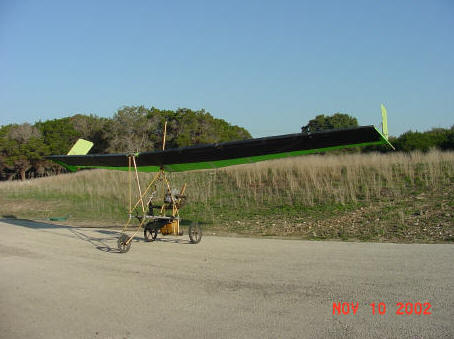 ime when dozens of new manufacturers were springing up
weekly in the rapidly growing ultralight market. A revolution in
aviation was starting. The 1979 model Pfledge retailed for $2750 when it
was introduced.
ime when dozens of new manufacturers were springing up
weekly in the rapidly growing ultralight market. A revolution in
aviation was starting. The 1979 model Pfledge retailed for $2750 when it
was introduced.
The production version of the Pfledge that
McCornack and Nicely flew to Oshkosh was known as the Pfledge OR
(Oshkosh Replica) and was powered by a German-made Sachs SA-340
direct drive engine of 336 cc displacement. It originally sold for
$3500 in 1980. Some other early Pfledges were powered by a 136 cc
Chrysler engine that put out about 10 hp.
The next version was the Pfledge 430D, powered by a Cuyuna 430D
engine, a powerplant that McCornack helped design for the aircraft
market and that Pterodactyl marketed directly as their product.
The Cuyuna 430D was a two cylinder, two stroke engine of 429 cc
displacement that put out 30 hp and weighed 64 lbs. The “D”
designation indicated direct drive. The initial price of
the 430D was $800. The price of the Pfledge 430D was $3600 in
1980.
McCornack and Nicely’s 1979 Oshkosh flight was
probably the second transcontinental flight by Pfledge. A few
weeks e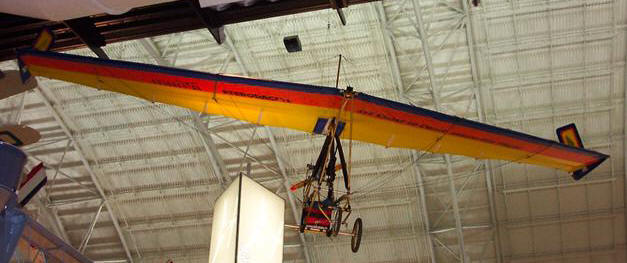 arlier John D. (Jack)
Peterson, Jr. flew his Pfledge from Long Beach, California to
Hilton Head, South Carolina in 29 days between July 9th
– August 6th 1979. He covered the 3,200 mile distance
in 120-mile legs with ground support provided by Dan White, a
schoolteacher from Santa Cruz, California. This was the first time
that an ultralight had been flown coast to coast. Peterson’s
Fledgling is now in a place of honour in the Smithsonian Museum’s Udvar-Hazy Centre.
arlier John D. (Jack)
Peterson, Jr. flew his Pfledge from Long Beach, California to
Hilton Head, South Carolina in 29 days between July 9th
– August 6th 1979. He covered the 3,200 mile distance
in 120-mile legs with ground support provided by Dan White, a
schoolteacher from Santa Cruz, California. This was the first time
that an ultralight had been flown coast to coast. Peterson’s
Fledgling is now in a place of honour in the Smithsonian Museum’s Udvar-Hazy Centre.
In
early 1980 the Pterodactyl factory moved 30 miles from Monterey to
a location at Watsonville,
California.
The new location was owned by the Monterey Bay Academy, a private
co-ed high school campus run by the Seventh Day Adventist Church.
The main attractions for Pterodactyl to re-locate there were the
large manufacturing space available and the school’s own 2200-foot
runway.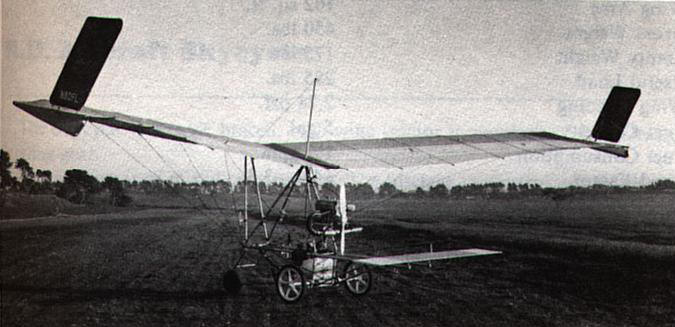
Pilots who learned to fly on hang gliders were comfortable with
the weight shift pitch control on the early flying wing
Pterodactyl models, but pilots coming to ultralights from other
parts of aviation were less so. McCornack started work on
aerodynamic pitch control in 1979. The first effort was a
rear-mounted elevator design called the NFL for “Not Foot
Launchable”. It
wasn’t a great success, although a few production versions were
shipped. The NFL (pronounced “Niffle”) was not foot-launchable
because of balance considerations due to the position of the
elevator in the back. Prior to the introduction of FAR Part 103 in
1982 it was at least a paper requirement that US ultralights must
be capable of being foot-launched if they were to avoid having to
be registered as amateur-builts and the pilot licenced. Putting
the tail in the front worked much better and retained nominal
foot-launch capability. The canard-equipped design first flew in
1980 as well. It retained the direct drive Cuyuna 430D engine and
carried the name Ptraveler.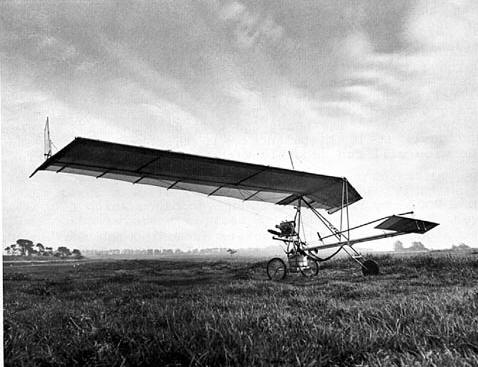
Improvements quickly followed and by 1981
the Ptraveler had traded in its direct drive Cuyuna 430D engine
for a 2:1 belt reduction drive Cuyuna 430R. This allowed it to
turn a 54-inch prop and reduced the noise of the earlier versions.
The new version carried the name “Ascender”. The original
intention was to name the new model “Ptomcat”, but another
manufacturer had taken the name “Tomcat”. It was fortuitous, as
the name “Ascender” came to be a legend in ultralight flying over
time.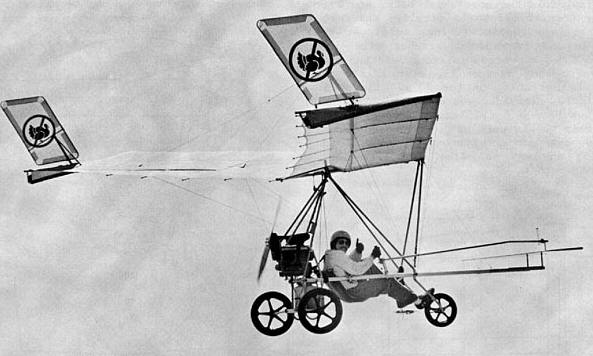 Ironically the other “Tomcat” was a problem aircraft with
serious design deficiencies. That name has come to refer to a
“dud” aircraft in ultralight circles (Although not in the US Navy
where they fly a completely different aircraft with the same
name). The first Ascender carried a price tag of $4200 in 1981. To
put that price in perspective, that was about 1/10 of the cost of
a new, well-equipped Cessna 152 that same year.
Ironically the other “Tomcat” was a problem aircraft with
serious design deficiencies. That name has come to refer to a
“dud” aircraft in ultralight circles (Although not in the US Navy
where they fly a completely different aircraft with the same
name). The first Ascender carried a price tag of $4200 in 1981. To
put that price in perspective, that was about 1/10 of the cost of
a new, well-equipped Cessna 152 that same year.
The Ascender II quickly followed with
more evolutionary refinements – fiberglass spring rod main landing
gear was introduced to replace the aluminum gear, along with
moving the throttle from the hang cage upright struts to the left
side of the hang cage. An improved muffler made the Ascender II
quieter yet.
Ascenders were adapted for many specialized
purposes. They were used for crop spraying and even an atmospheric
research project at Colorado State University. The one-of-a kind
Ascender equipped for that atmospheric sounding mission was named
the Pterodactyl Psounder.
Work was started at this time on the
Pterodactyl Ptug, a hang glider tow plane design. The pusher
engine and lack of a tail made the design work interesting. It
used a bridle design that fit around the prop, with the towline
attachment behind the prop. It worked very well and even today
Ptugs out-pull and out-climb other purpose-designed hang glider
tugs.
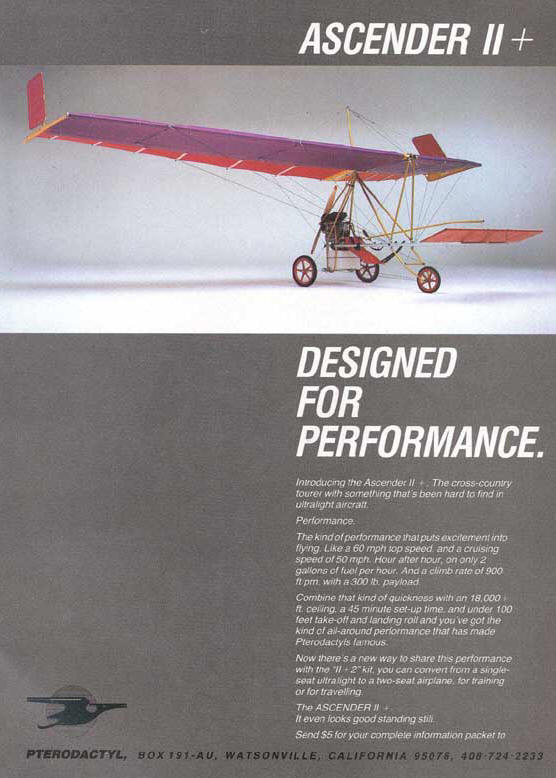 Early 1982 saw the introduction of
the Ascender II+. This model had a wider, 20 ½” hang cage
(compared to 15 ¾” wide hang cage on all the earlier models),
stronger upright struts and a stronger wing with 1 ¾” inch spars
of 0.049” thickness (the earlier models used 1 ½” spars of 0.049”
thickness) and heavier 1/8” outer bottom cables. It was designed
to lift big pilots. The price of an Ascender II+ in 1983 was
$5260.
Early 1982 saw the introduction of
the Ascender II+. This model had a wider, 20 ½” hang cage
(compared to 15 ¾” wide hang cage on all the earlier models),
stronger upright struts and a stronger wing with 1 ¾” inch spars
of 0.049” thickness (the earlier models used 1 ½” spars of 0.049”
thickness) and heavier 1/8” outer bottom cables. It was designed
to lift big pilots. The price of an Ascender II+ in 1983 was
$5260.
By
the late summer of 1982 the two-seater Ascender II+2 was flying
and ready for the market. This was simply an Ascender II+ airframe
with a second hang cage bolted onto the right side. The right seat
pilot had a throttle mounted on the right hang tube linked to the
left seat throttle through a push-pull cable arrangement. Both
pilots shared the central side stick. The II+2 flew with the same
34 hp Cuyuna 430R engine as all other Ascenders at that time. The
II+2 was designed specifically for two roles. The first was dual
flight training, forever ending the days of ultralight pilots
learning to fly alone in a big field by reading a book. The second
role was two-place touring and fly camping. Many two seaters were
produced along with many kits for the second seat. The second seat
was removable in 10 minutes, converting the aircraft back to a
single seater. The first Pterodactyl two seater was actually flown
in the summer of 1980 and it was often unofficially referred to at
that time as a “Double ‘Dactyl”. The original intention was to
market it under the name “Ptoucan” (as in “Toucan fly together”),
but once again another manufacturer had taken that name. For a
while it was known as the “Ptrainer”, but the name “Ascender II+2”
was eventually used. This was probably driven by the fact that the
aircraft was convertible back to a single seater Ascender II+ so
quickly.
 The
two seater Ascender II+2 was delayed in development for two years
from 1980 to 1982, so that the new FARs governing ultralights
could come into being. The FAA was still developing the new rules
for ultralights and it wasn’t clear whether two seaters would be
included as ultralights or not. When FAR Part 103 appeared in 1982
it defined ultralights as single seaters only and the two-seat
II+2 was relegated to the amateur-built experimental category in
the USA. Later on it qualified as a FAR Part 103 exemption
trainer, when the exemptions were made available. The II+2 did
qualify as an ultralight or microlight in many other countries
including Canada. The 1983 US price of a Cuyuna 430R powered
Ascender II+2 was $5560.
The
two seater Ascender II+2 was delayed in development for two years
from 1980 to 1982, so that the new FARs governing ultralights
could come into being. The FAA was still developing the new rules
for ultralights and it wasn’t clear whether two seaters would be
included as ultralights or not. When FAR Part 103 appeared in 1982
it defined ultralights as single seaters only and the two-seat
II+2 was relegated to the amateur-built experimental category in
the USA. Later on it qualified as a FAR Part 103 exemption
trainer, when the exemptions were made available. The II+2 did
qualify as an ultralight or microlight in many other countries
including Canada. The 1983 US price of a Cuyuna 430R powered
Ascender II+2 was $5560.
As mentioned, McCornack had always designed
his aircraft for real traveling and especially for “fly-camping”,
with lots of in-wing stowage for tents and sleeping bags.
Pterodactyl actually marketed a small dome tent specifically for
fly camping, under the name Ptent, of course. Retail price of the
two-man Ptent in 1980 was $135.
 As
soon as the bugs were out of the prototype two-seater, McCornack
invited Robin Sclair, a journalist with the Ultralight Flyer
newspaper, to fly with him to Mexico. They were gone for a week,
from 14-21 October 1982, covering 1025 miles round trip. The pair
flew down the interior of California’s desert country, camping at
night, with every second night in small motels along the way. The
flight received lots of coverage in the ultralight press and sales
did well as a result.
As
soon as the bugs were out of the prototype two-seater, McCornack
invited Robin Sclair, a journalist with the Ultralight Flyer
newspaper, to fly with him to Mexico. They were gone for a week,
from 14-21 October 1982, covering 1025 miles round trip. The pair
flew down the interior of California’s desert country, camping at
night, with every second night in small motels along the way. The
flight received lots of coverage in the ultralight press and sales
did well as a result.
The final Pterodactyl production model based
on the original Manta Fledge IIB wing was the Ptiger, introduced
around late 1982. This was an Ascender with the wings clipped from
the Ascender’s 33 feet to 29 feet and sporting a fiberglass
cockpit enclosure. It was capable of 75 mph on the same 430R
engine and really exceeded the US FAR Part 103 ultralight rules by
quite a margin. Most Ptigers were registered as amateur-built
experimental and carried “N” numbers, although production numbers
were small.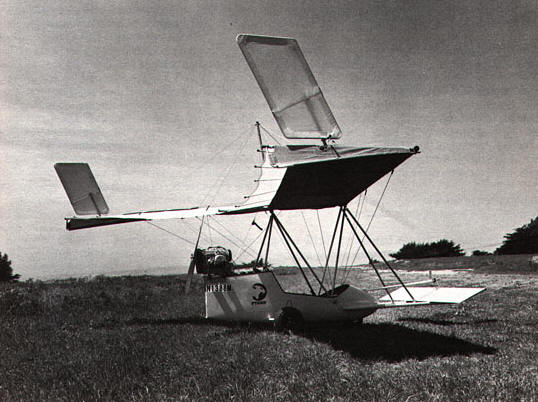
The last aircraft developed by Pterodactyl
Limited was the Light Flyer. This was based, not on the Manta
Fledge IIB wing of all the previous Pterodactyl designs, but on
the Easy Riser biplane hang glider wing. The Light Flyer was
intended to be a nostalgic tribute to the 1903 Wright Flyer (hence
the name), but with some practical refinements, such as tricycle
landing gear replacing the Wright Flyer’s skid gear. The Light
Flyer achieved only very limited production status in 1984 and
only about 5 were sold. The price in 1984 was $5400. Reportedly
the aircraft flew well.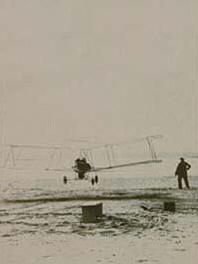
From the early days of Pterodactyl Limited
several after-market suppliers saw the opportunity to sell
improvements to the Pterodactyls. Pterodactyl eventually
incorporated many of these modifications as factory-standard
equipment into their later models. Yarnell Techtonics introduced a
welded steel steerable nose gear and a hang tube mounted throttle
quadrant. That throttle quadrant later became standard equipment
with the introduction of the Ascender II, while the steel nose
gear did not, although many Pterodactyl owners installed them. The
steel nose gear sold for $195 while the throttle quadrant was $35
in 1980. Yarnell also offered skis for the Pterodactyls for $175
in 1981, although it is not known how many brave winter flyers
installed and used them! Mike Stratman introduced an aluminum
steerable nosegear and even a nose gear bicycle-style brake for
the aircraft. The Stratman steerable nose gear sold for $85 while
the brake set was $45 in 1981. The Stratman nose gear became the
basis for the current DFE Ultralights factory-standard steerable
nose gear. Another company produced a fibreglass spring-rod style
main landing gear to replace the troublesome factory standard
aluminum gear. The fibreglass spring rod suspension also became a
standard-factory item starting with the Ascender II. Sierra Floats
of Lake Tahoe California produced a flat-bottomed set of
fibreglass floats that featured solid foam cores for the
Pterodactyls. In 1984 they sold for $1000, plus $300 for the
mounting hardware. Ballistic Recovery Systems (BRS) designed an
installation for the Pterodactyl and recorded the very first BRS
“save” on a Pterodactyl in August 1983.
Some production Ascenders were equipped with
wing-mounted spoilers for roll control as an option, the spoilers
being actuated by foot pedals. This gave true three-axis control
and some degree of improved crosswind capability to the design, at
the cost of weight, cost, complexity, drag and set-up time.
Pterodactyl also experimented with flaps at one time for the
Ascender, although these were never marketed.
As evolutionary changes were made to the
basic design over the years, Pterodactyl Limited made
“modification kits” available at very attractive prices, to bring
older models up to the current model status. Canard kits were sold
to turn Pfledges into Ptravelers. Reduction drive kits turned
Ptravelers into Ascenders. Fibreglass spring rods and new throttle
quadrants turned Ascenders into Ascender IIs. Due to differences
in design it was not possible to modify Ascender IIs into II+s or
II+2s or Ptigers. As a result of the mod kits being available many
earlier models were upgraded to later models. A large number of
the Pfledges became Ascenders over time. Some Pfledge “purists”
did keep their aircraft in original configuration and still fly
them that way today, preferring the light weight, weight shift
control and ease of set-up of the earlier designs. Even many of
those surviving Pfledges were upgraded with some of the more
desirable upgrades, such as nose wheel steering.
In 1984 a new group of partners offered to
buy Pterodactyl Ltd from McCornack. Wanting to get back into
research, design and development work, McCornack agreed to sell.
The new company was set up in Rowlett, Texas under the name
“Freedom Fliers” with Gary C. Vick as President. At the time of
the production transfer Pterodactyl was producing five models –
the Ascender II, Ascender II+, Ascender II+2, Ptiger and the Light
Flyer. Freedom Fliers took the Light Flyer, Ascender II and Ptiger
out of production and intended to concentrate on producing kits
for the Ascender II+ and Ascender II+2 two seater models, along
with their own powered parachute line.
Freedom Fliers only produced a few machines before going out of
business. Times had changed and the whole aviation industry was
going through a black period. The heady days of shipping hundreds
of planes a year disappeared. There was a recession on and many
companies stopped manufacturing – Cessna stopped all light plane
production, as did Ultraflight, the Canadian manufacturer of the
Lazair. Both of those companies cited liability insurance concerns
in their shutdown of production. Many dozens of other ultralight
manufacturers disappeared overnight. In an interview with Jack
McCornack in 2001, he was of the opinion that the end was largely
due to simple market saturation. After almost 6 years of frantic
production almost everyone who wanted an ultralight had one.
McCornack was never paid a cent for the company – they went out of
business too quickly and disappeared. 1396 Pterodactyls had been
produced. It is reported that another company, Coldfire Systems of
California, produced a few custom order kits for a few people
before they too disappeared.
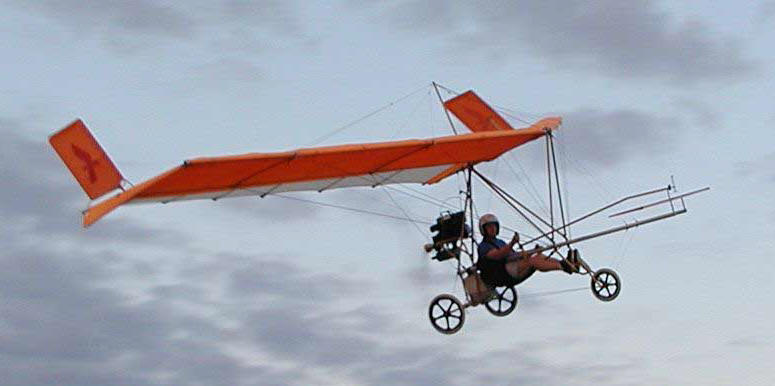 By 1990 one of McCornack’s old
dealers, Dave Froble, was getting short of spare parts. He was
still flying three Pterodactyls – a Pfledge, an Ascender II and an
Ascender II+2 two seater. Dave looked around for parts and came up
empty – no one seemed to be supplying parts for the Pterodactyls.
He tracked down and acquired Manta’s old stocks of parts and
started collecting or making tubing, bolts and other parts. He
created CAD-CAM drawings for all the parts for quality control. In
1991 he started DFE Ultralights with the aim of supplying parts to
keep the remaining Pterodactyls flying.
By 1990 one of McCornack’s old
dealers, Dave Froble, was getting short of spare parts. He was
still flying three Pterodactyls – a Pfledge, an Ascender II and an
Ascender II+2 two seater. Dave looked around for parts and came up
empty – no one seemed to be supplying parts for the Pterodactyls.
He tracked down and acquired Manta’s old stocks of parts and
started collecting or making tubing, bolts and other parts. He
created CAD-CAM drawings for all the parts for quality control. In
1991 he started DFE Ultralights with the aim of supplying parts to
keep the remaining Pterodactyls flying.
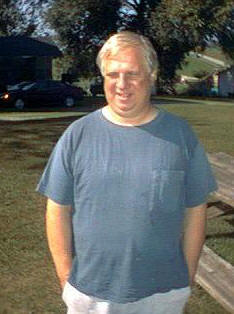
By 1992 Froble had all the parts available
and realized that he could ship complete kits if there was a
demand. Froble was selling parts part-time
while working as a software designer the full-time. Today he
carries on Ascender development work when he has time to do so and
is always working on improvements to the design.
At
the present time DFE Ultralights has five different kits
available. The DFE Ascender III-A is a weight-shift flying wing
similar to the original Pfledge. The 2003 price for the Ascender
III-A is $6800. The DFE Ascender III-B is the canard version,
similar to the Ascender II and carries a 2003 price of $7900. The
DFE Ascender III-C is a development of the heavy-duty Ascender II+
and sells for $8100. The Ascender III-C can also add the sidecar
kit to become a two seater. The sidecar kit adds $534 to the price
of the Ascender III-C, bringing it to $8634 with the 34 hp 430R
engine. The DFE Ascender III-T hang glider tug is also available
as a completely assembled aircraft.
All
the DFE Ultralights Ascender III designs incorporate many
evolutionary improvements, like steerable nose gear, lateral and
longitudinal winglet braces and Mylar covering on the canard. The
standard engine for most of the designs is still the Cuyuna (now
produced by 2 Stroke International) 430R. The two-seat version of
the III-C and also the single seat III-T Tug have the Rotax 503
DCDI dual carburetor-equipped 50 hp powerplant as the recommended
engine, giving both models excellent take-off and climb
performance. The basic cost of the two seater Ascender III-C with
the Rotax 503 DCDI engine, in 2001, was about $10,500.
When inflation is accounted for, the present-day prices of DFE
Ascenders are actually about 20% lower than the price of a
comparable Pterodactyl Ascender in 1981-83! They are truly a
bargain in today’s aviation marketplace.
DFE Ultralights continues to produce these
five kit planes and parts for all the Pterodactyl models. For more
information on the current production models of the Ascender III
or parts to keep an older Pterodactyl flying have a look at the
DFE website at
http://204.215.195.118/ or contact Dave Froble at
davef@tsoft-inc.com
By
Adam Hunt